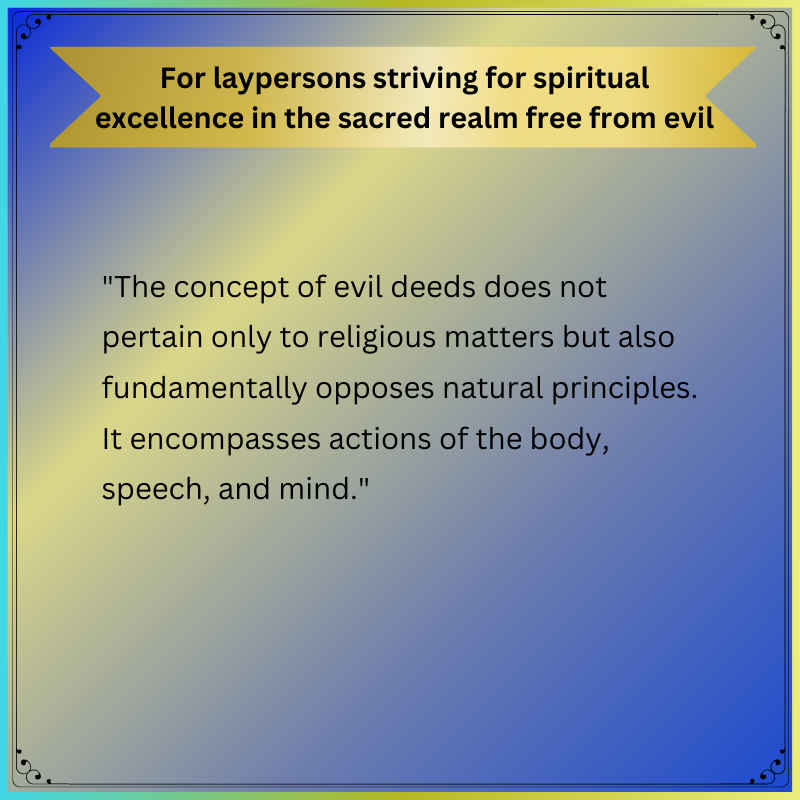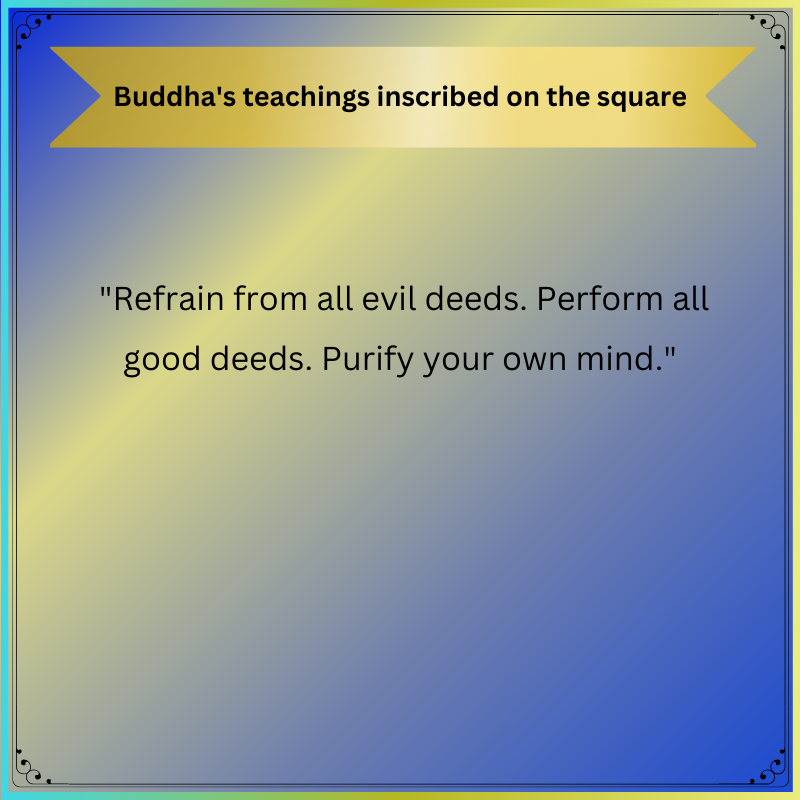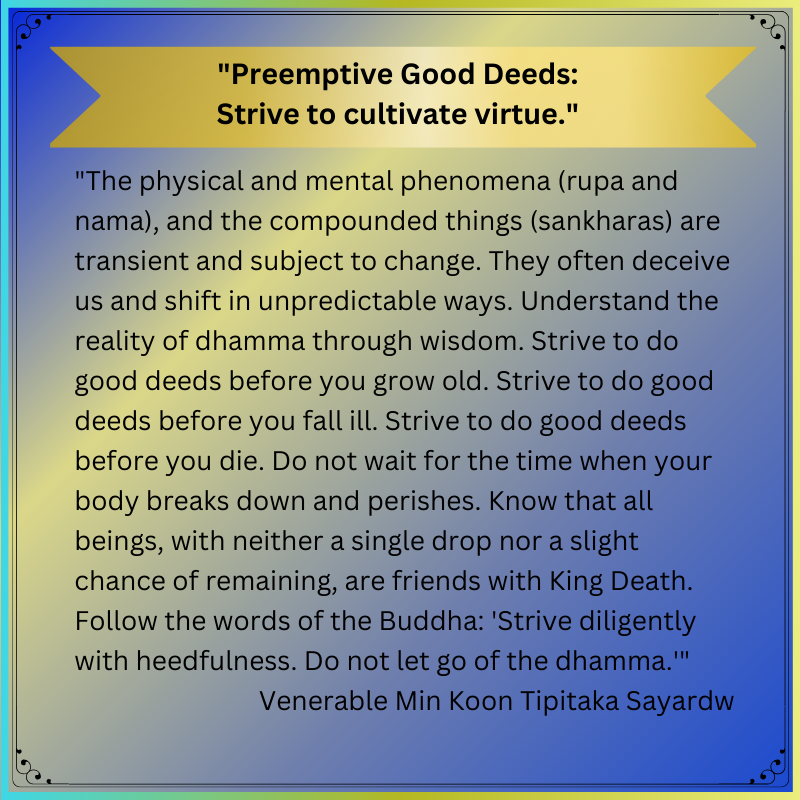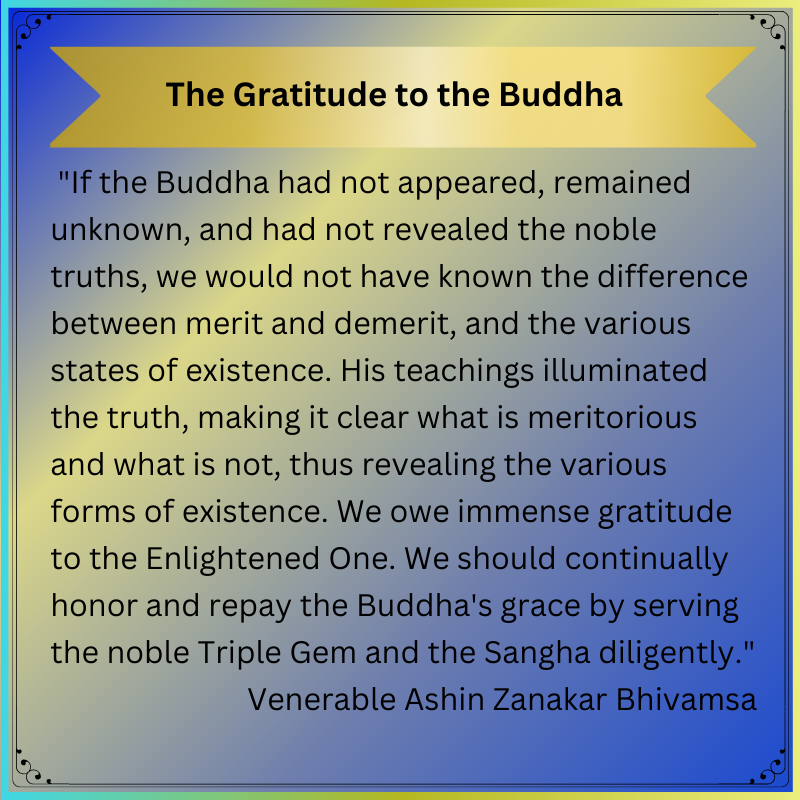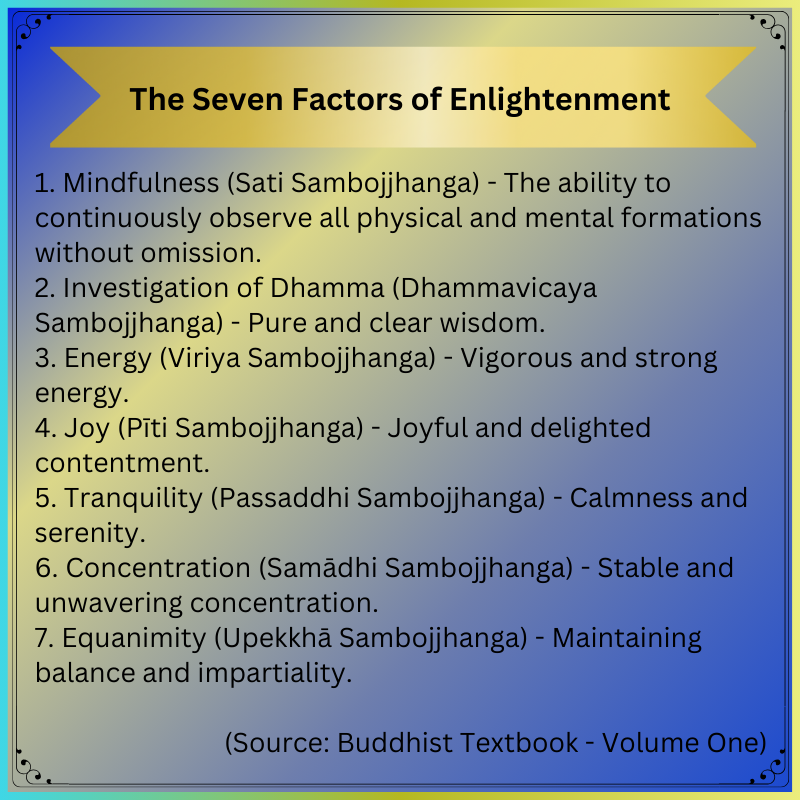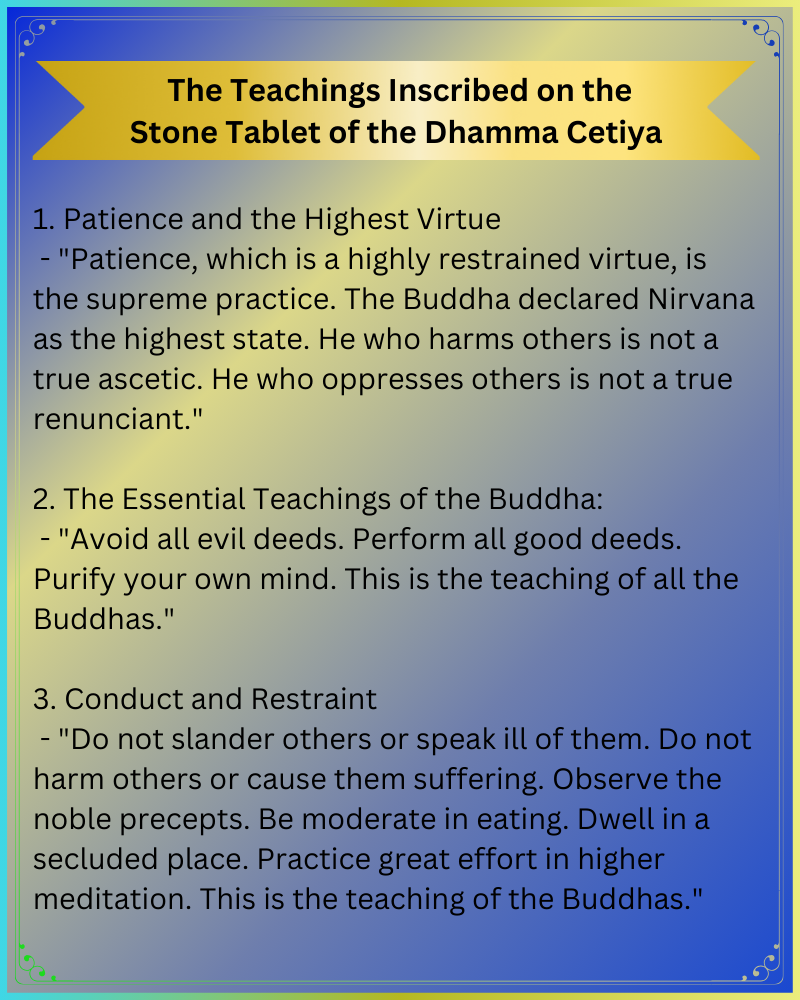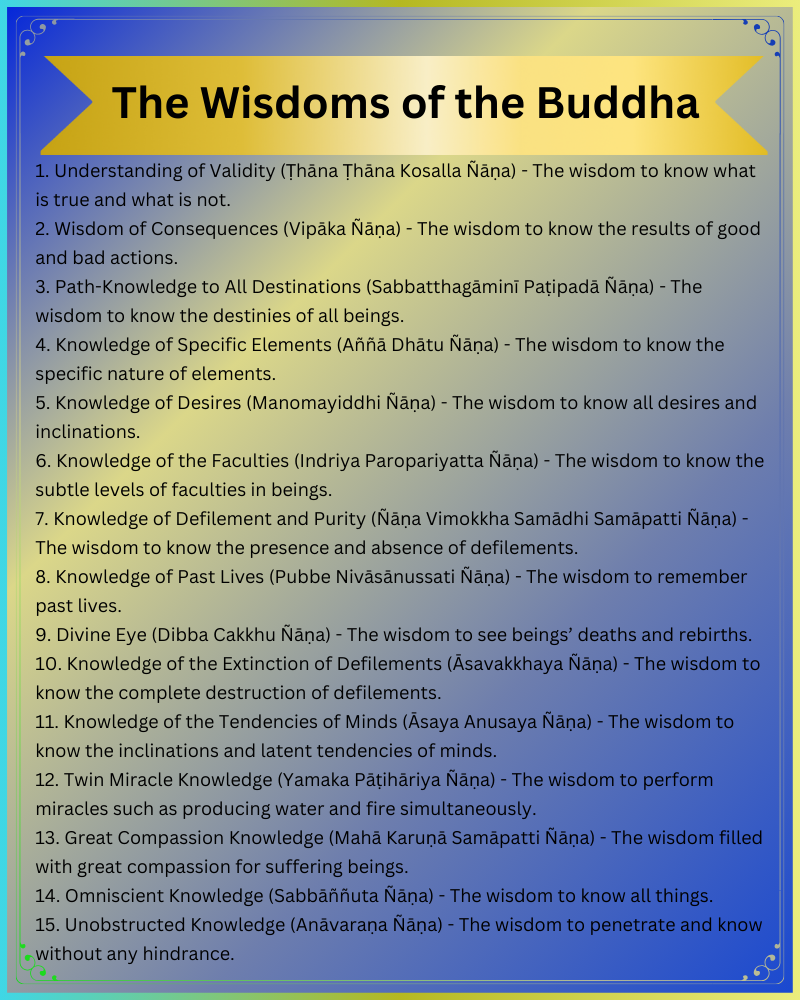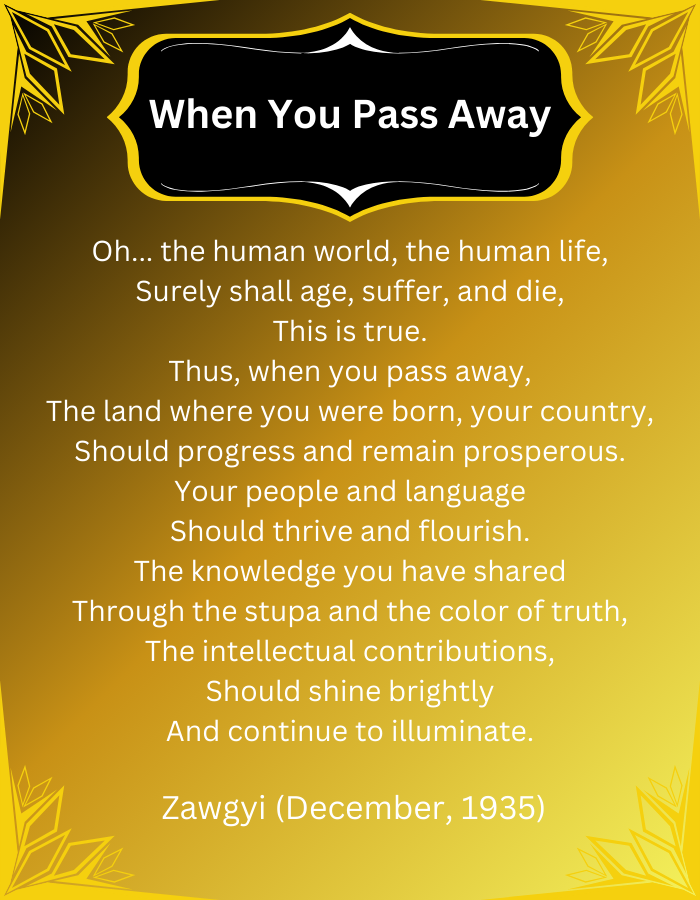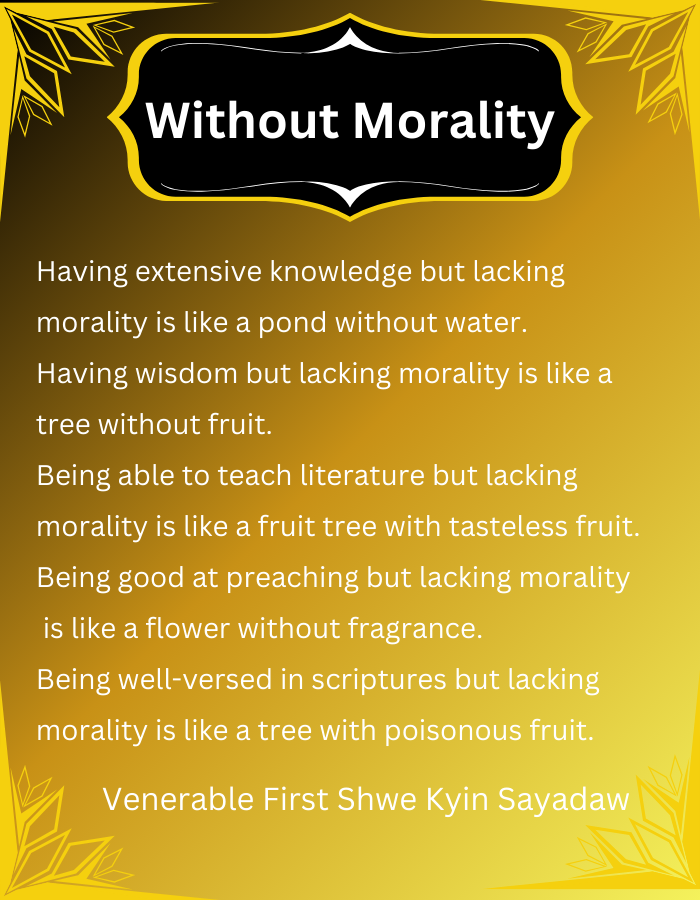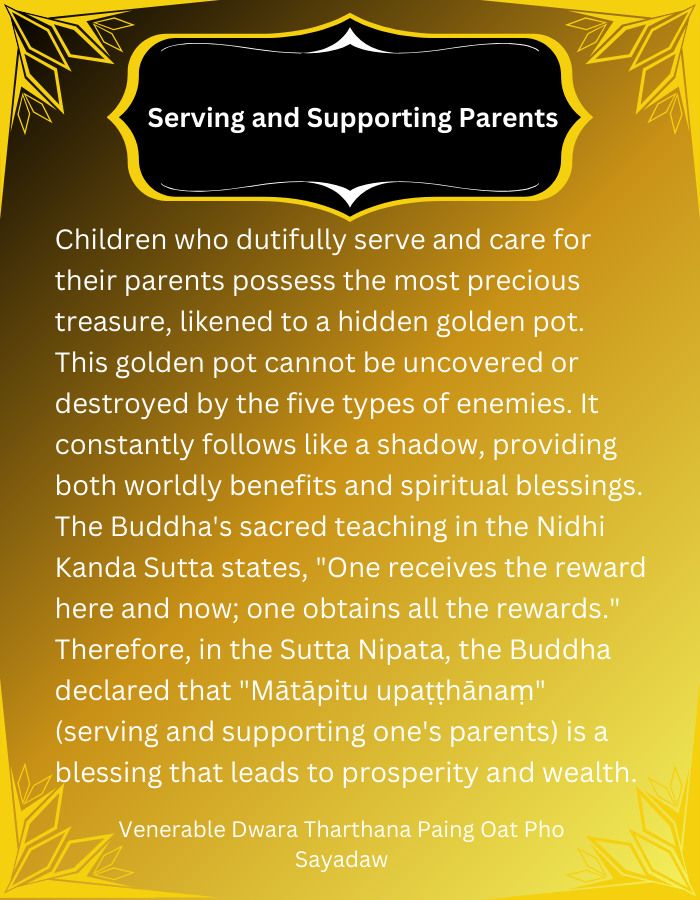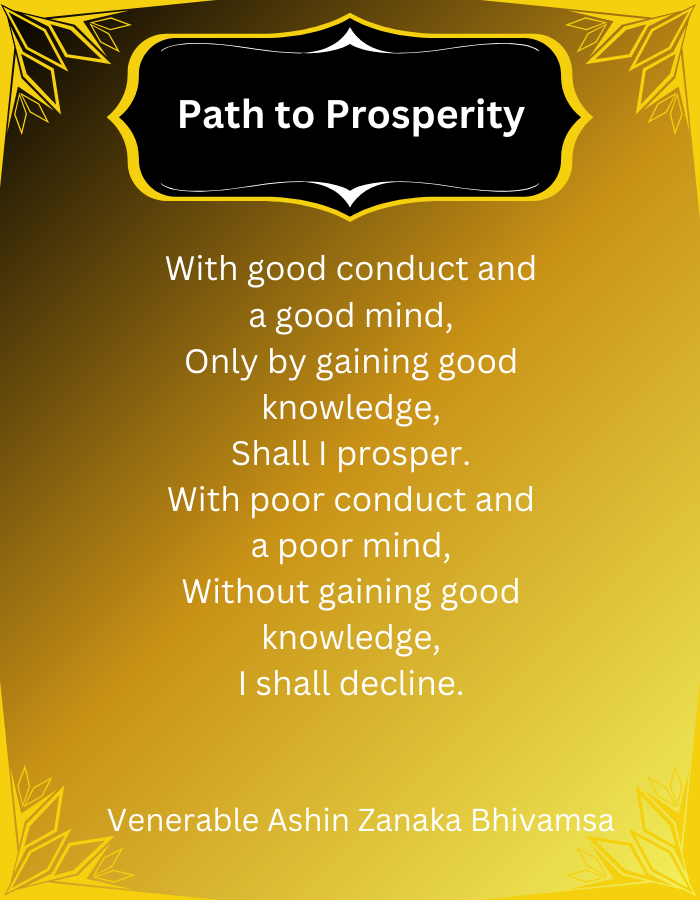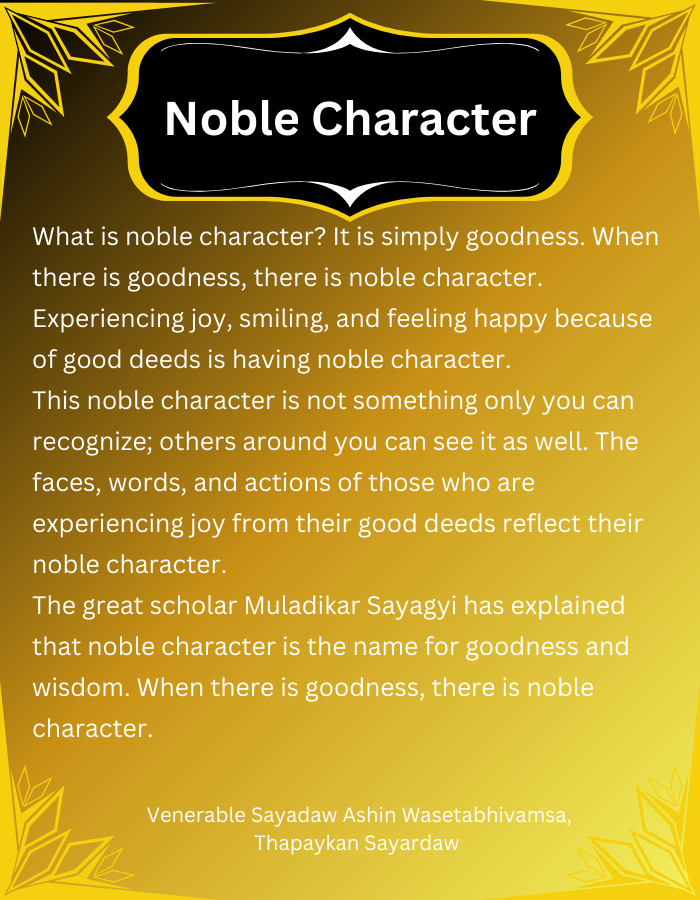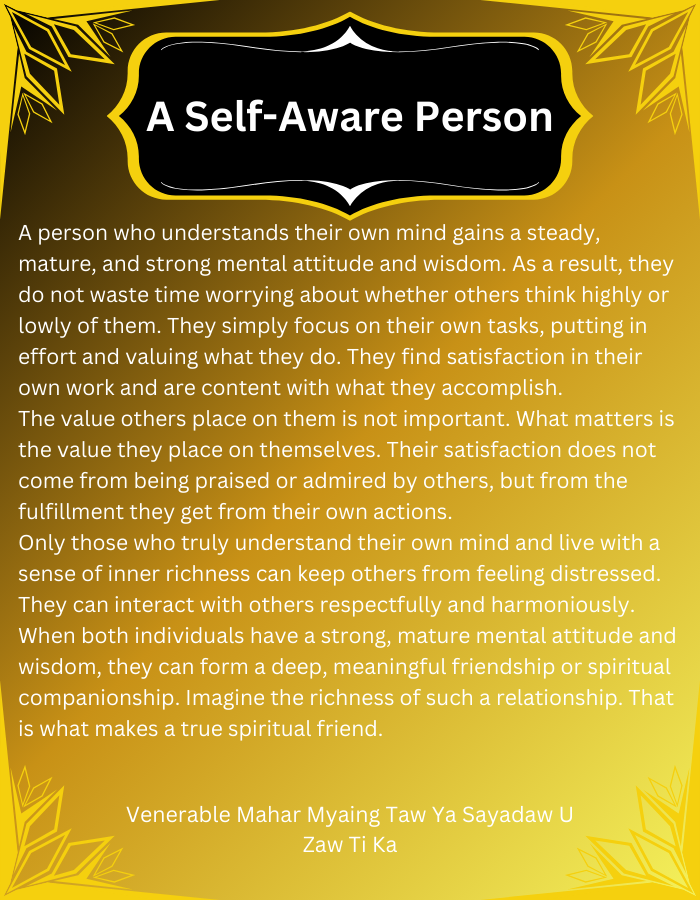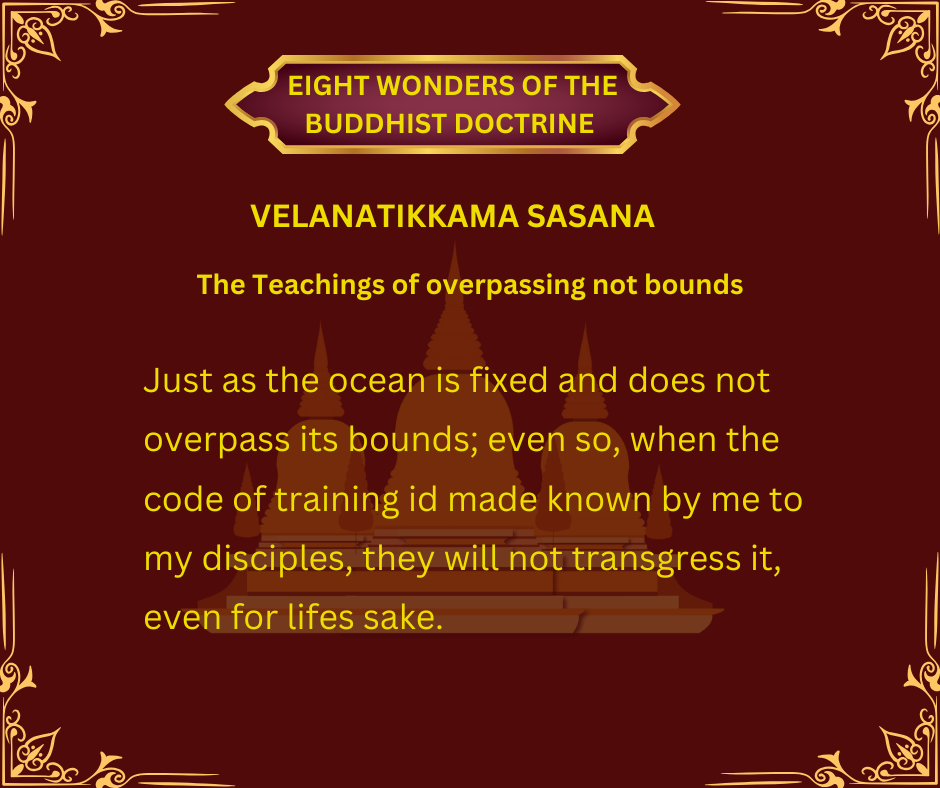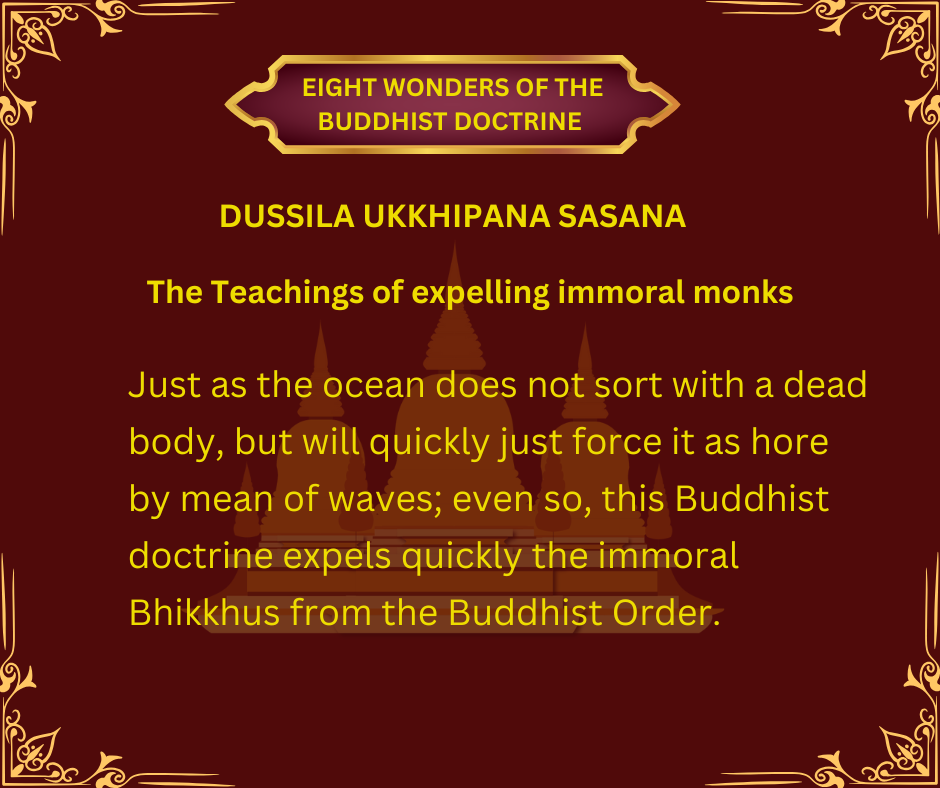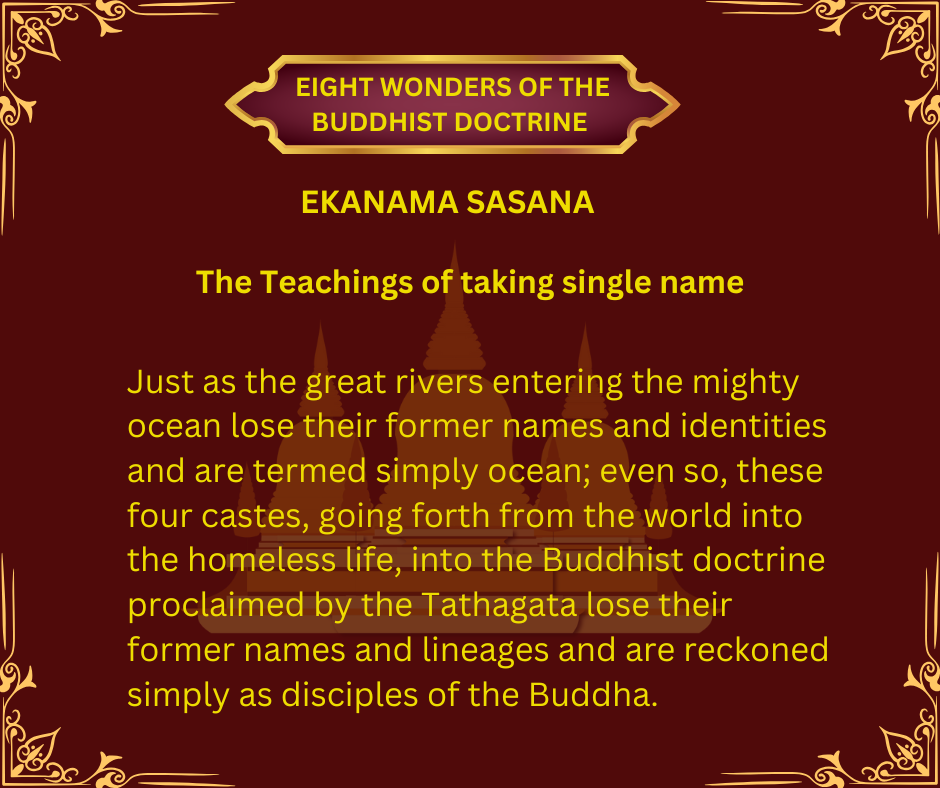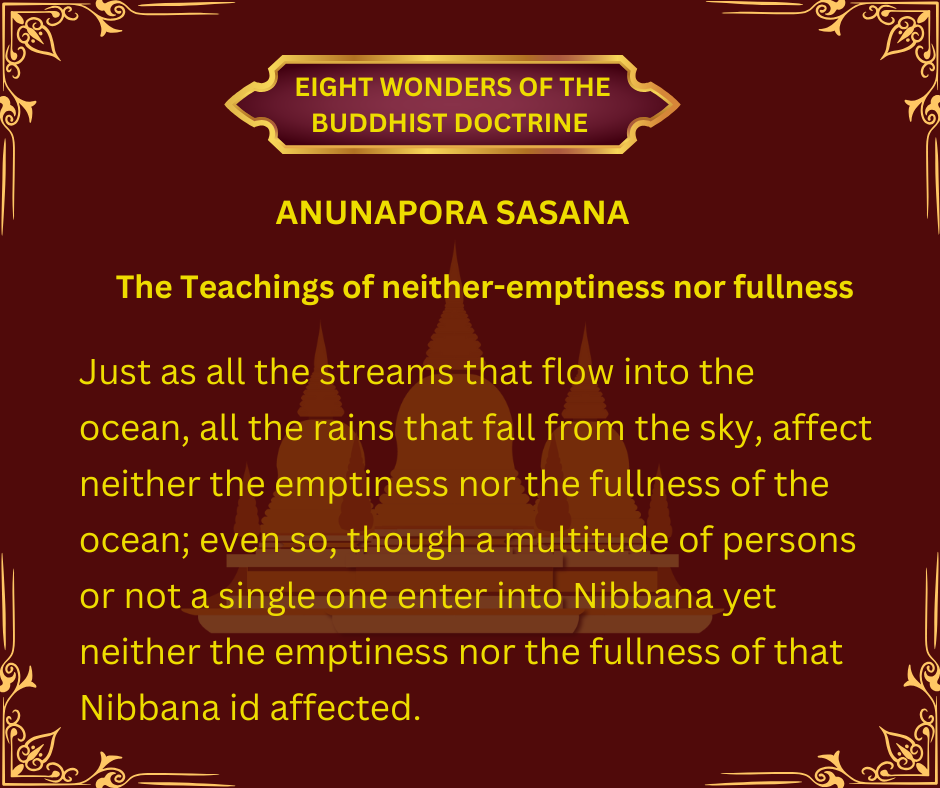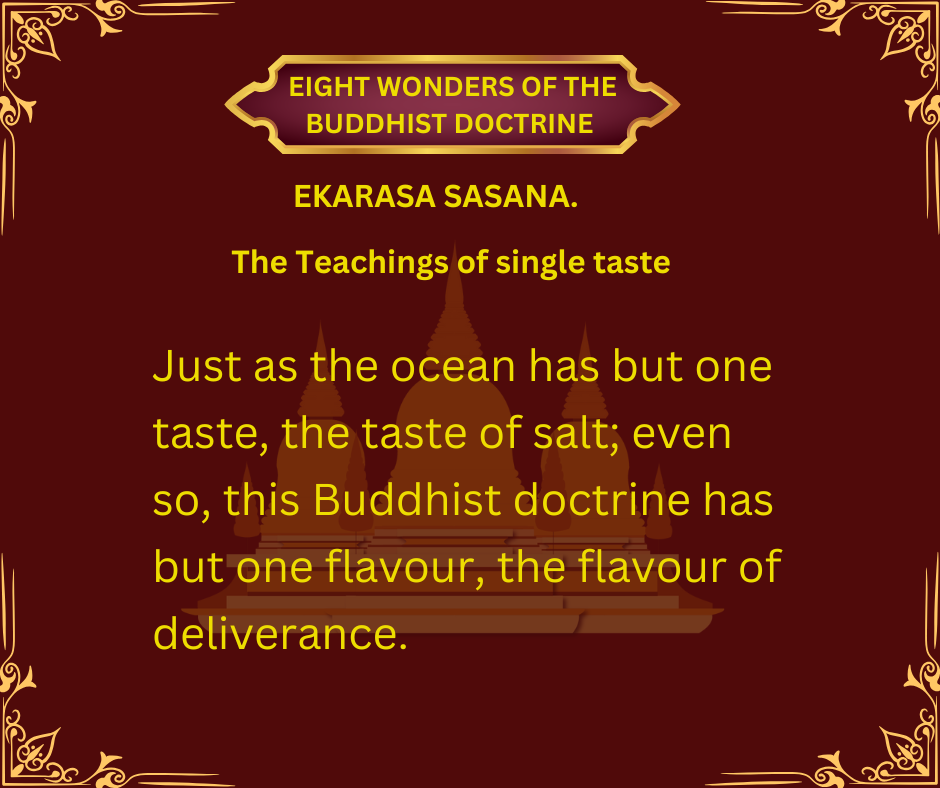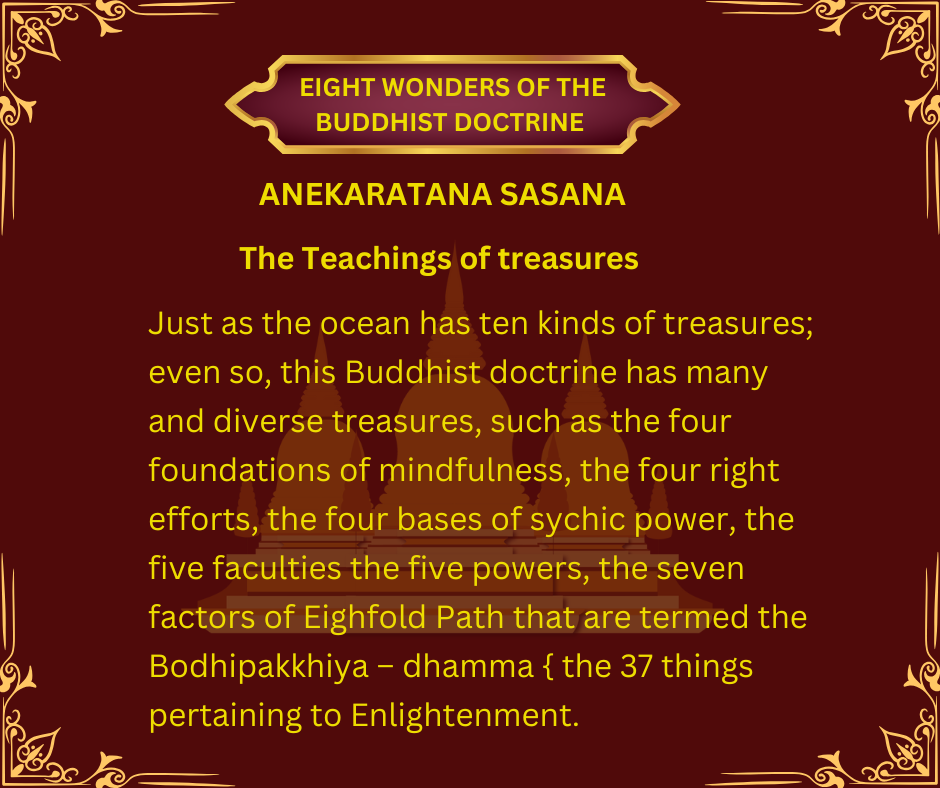Teachings of the Buddha
Guiding Sermons of Shwedagon Ovadacariya Sayadaws

Sermon of Sayadaw Bhaddanta Thirinda Bhivamsa
“Worldly Humans, Dharma Humans”
In life, there are two types of humans: worldly humans and dharma humans. Those who pursue desires and rely on possessions are worldly humans. Only those who follow the Dharma and rely on wisdom can be called dharma humans.
In life, wisdom provides more stability, maturity, peace, and happiness than material possessions. Without wisdom, human wealth and prosperity bring anxiety, and once attained, they fail to bring peace of mind. Human desires and needs, when unmet, cause suffering, and when met, do not ensure happiness. Life is not about having everything. The essence of human prosperity is wisdom. Without the knowledge of Dharma, the possessions accumulated in the quest for prosperity often lead to constant sorrow and stress.
Human life and prosperity cannot be complete with material possessions alone. The most valuable treasure of human life is wisdom, not material possessions.
Venerable Sirintabhivamsa
Tipitaka Yaw Sayadaw
Sermon of Sayadaw Bhaddanta Tiloka Bhivamsa
The fool and the wise (bala , pandita)
The one who delays performing duties is a human fool. (Anguttara Nikaya 1, 82) The one who takes prompt action and fulfills duties is a wise person. (Anguttara Nikaya 1, 83)
The Value of Time
Time consumes and devours all beings. However, arahants who are capable of great achievements can make use of every moment to gain merit, wisdom, and wealth and can even consume time themselves.
May your time be well-spent and yield good results. While you have time, diligently acquire merit, knowledge, and wealth. Time consumes the weak and the capable consume time. (Jataka 1, 68)
Three Essences
For everyone who possesses a body, there are three things related to the body that will eventually perish:
- Material possessions,
- The body,
- Life.
Before these three perish, one should attain the essence of charity (dāna), morality (sīla), and insight meditation (vipassanā) so that it would be worthwhile obtaining the human body.
In material possessions, if one seeks the essence, one will find it in charity (dāna). In the body, if one seeks the essence, one will find it in morality (sīla). In life, if one seeks the essence, one will find it in insight meditation (vipassanā). Before material possessions, the body, and life perish, seek to attain the essence of charity, morality, and insight meditation. (Jataka, IV, 7 – Kanha Jataka) The best donation is the gift of the Dhamma.
“Sabba-dānaṃ dhamma-dānaṃ jināti.” means the gift of the Dhamma excels all other gifts.
- Among the gifts of material and Dhamma, material gifts (āmisa) are worldly, associated with clinging, and related to the physical and sensory realm. In contrast, Dhamma consists of transcendent realities (lokuttara dhammas) and the teachings that lead to Nibbāna. Therefore, Dhamma is superior to material gifts.
- Anyone, including a child, can give material gifts they possess. However, only those who are qualified and knowledgeable enough to give Dhama can give the gift of Dhamma. Thus, a person who can give the gift of Dhamma is superior to one who can only give material gifts.
- Anyone, including a child, can receive material gifts given by others. However, only those who are capable and wise can receive the gift of Dhamma. Those with limited wisdom can only understand a little, while those without wisdom cannot understand it at all. The more wisdom one has, the more one can comprehend the Dhamma. Therefore, a person who can receive the Dhamma is superior to one who can receive only material gifts.
- In terms of benefits, for both the giver and the receiver, the benefits of Dhamma surpass those of material gifts.
Thus, for the benefit of the giver and the receiver, in these four aspects, the gift of Dhamma is supreme.
Bhaddanta Tilokabhivamsa,
National Preceptor,
Abhidhaja Maharatthaguru, Aggamahapandita
The Sermon of the Venerable Bhaddanta Nagita
Ten years ago, Professor Dr. Hiroki Okumura, a native of Kyoto, Japan, a historically significant Buddhist region, came to our school and stayed for a month, observing the monastic rare life of a monk. He prioritized studying the Vinaya Pitaka, the Cūḷavagga, and the Senāsana Khandhaka as part of his doctoral dissertation, during which I assisted him and became good friends. This connection led him to enter the monkhood. During his stay, he inquired about Japanese Buddhists.
The professor shared that when elderly Japanese Buddhists, who can no longer travel due to old age but wish to make pilgrimages, hire knowledgeable representatives to visit significant Buddhist sites on their behalf for substantial fees. On hearing the profound faith of these elderly Japanese Buddhists, I was filled with admiration and called out ‘Sādhu’ in delight.
Currently, within our own nation, we have also received the joyous news that, under the guidance of our nation’s leaders, the Ministry of Religious Affairs and Culture will implement a Pagoda Digital Directory at the renowned Shwedagon Pagoda. This is particularly delightful because it means that devout Buddhists from around the world will be able to venerate and admire the powerful pagodas and relics of Myanmar from a single location without the need for extensive travel or expenses.
Indeed, the Shwedagon Pagoda Trustee Association has arranged for the elderly and infirm pilgrims to have easy access by providing wheelchairs and electric lift from the entrance to the main platform, ensuring that they can comfortably pay their respects to the pagoda.
As a result, the forthcoming Pagoda Digital Directory will not only provide the opportunity to venerate the Shwedagon Pagoda but also all the powerful pagodas across the nation, fulfilling the desires of devotees. This will particularly benefit the citizens of Myanmar, especially the residents of Yangon, more than Buddhists in other countries.
In undertaking these measures, we are full of praise and joy as it is known that the Shwedagon Pagoda and its associated religious buildings will be meticulously maintained and preserved.
“Love goodness, strive for goodness, and let goodness reside within you.” “May goodness reside within you.”
Ven. Nagita Advisor to the Trustees of the Shwedagon Pagoda, Aggamahā Saddhammajotikadhaja, Aggamahā Ganthavācaka Paṇḍita, Vinaya + Dīghanikāya Pāḷipāragū, Dvipitaka Dhara, Head Mahānāyaka of the Shwepyitha Pariyatti Monastery
Ven. Aggasāmi’s (Dvipitakaḍhara) Teaching
1. Purity of Doctrine: If the precepts of the Pātimokkha are violated, strive to purify oneself through atonement, listening to the teachings, and other means.
2. Purity of Restraint: If any of the six sense restraint precepts are violated, strive to maintain purity in the future by making a firm resolution to avoid such violations and diligently guarding oneself.
3. Purity of Livelihood: If one’s precepts are violated due to wrong livelihood such as improper means of gaining wealth, strive to avoid such actions in the future and seek a right livelihood that is pure and proper.
4. Purity of Requisites: If the four requisites (food, clothing, shelter, and medicine) are misused, strive to use these requisites with careful consideration and avoid any improper use to maintain purity.
Ven. Aggasāmi (Dvipitakaḍhara), Aggamahāpaṇḍita
Venerable Bhaddanta Kinsa's Sermon
Encountering such a noble dispensation is considered an extraordinary stroke of good fortune. In this auspicious encounter with the noble dispensation and having attained human existence, it is imperative to diligently cultivate and accumulate meritorious virtues such as generosity (dana), morality (sila), and insight meditation (bhavana) while there is still time.
Reflecting on the following impending dangers, we should strive earnestly before these adversities befall us:
1. The future peril of suffering caused by old age (jara).
2. The future peril of suffering caused by illness (vyadhi).
3. The future peril of suffering caused by death (marana).
To conclude, considering these forthcoming afflictions, we must exert ourselves to attain the Dhamma, which will shield us from such future dangers, and strive to realize the Nibbana that we have not yet encountered.
Bhaddanta Kinsa
State Sangha Maha Nayaka, Maha Ganthavacaka Pandita
Hlaing Ratana Pariyatti Monastery, Shwepyithar Township
Sermon by Sayadaw Bhaddanta Vepulla
2. In preserving and maintaining this great stupa and other religious edifices, utmost care must be taken to ensure that their historical value remains undamaged and unblemished.
Bhaddanta Vepulla (Aggamahapandita)
Venerable Bhaddanta Jagara’s Sermon
1. One must possess a pure mind
2. One must maintain morality (sila).
3. One must practice Vipassana meditation.
With these three perfect qualities, one will undoubtedly attain ultimate liberation from the cycle of Samsara.
The virtuous ones proclaim: “With a pure mind, steadfast morality, and dedicated practice of Vipassana, liberation from Samsara is assured.”
Regarding the welfare of others,
with diligent and constant effort,
without swaying or wavering,
Steadfastly follow your path,
With a kind heart, look forward and ahead.”
Myathein Tan Sayadaw
Venerable Bhaddanta Susita's Sermon
- By performing bodily actions with loving-kindness, the group will unite harmoniously.
- By speaking words with loving-kindness, the group will unite harmoniously.
- By thinking thoughts with loving-kindness, the group will unite harmoniously.
- By critically analyzing and reviewing correctly, the group will unite harmoniously.
- By practicing similar moral conduct, the group will unite harmoniously.
- By sharing similar beauty of knowledge, the group will unite harmoniously.
- If the six principles of harmony are cultivated daily, and if the minds are aligned with unity, the true desires will be fully fulfilled, and the ultimate goal will be reached.
Saraniya Sutta
Ashin Susuta (Nandathara)
State Sangha Maha Nayaka
Venerable Bhaddanta Vayaminda Bhivamsa’s Sermon
satam hi so piyo hoti,
asatam hoti appiyo.
The Buddha’s words harmonize with this: the noble ones appreciate admonishment, whereas the ignoble do not.
According to the Vinaya Pitaka, Parivara Pali, there are four types of requisites:
The Four Types of Requisites (cattaro parikkhara)
1. atthi parikkharo rikkhitabbo gopetabbo mamayi tabbo paribhunjutabbo
2. atthi parikkharo rikkhitabbo gopetabbo mamayi tabbo na paribhunjutabbo
3. atthi parikkharo rikkhitabbo gopetabbo, na mamayi tabbo na paribhunjutabbo
4. atthi parikkharo na rikkhitabbo na gopetabbo na mamayi tabbo na paribhunjutabbo
Explanation:
1. The first type includes requisites that should be safeguarded to prevent loss, treated with affection, and used appropriately. These are personal possessions.
2. The second type includes requisites that should be safeguarded to prevent loss, treated with affection, but not used. These are requisites belonging to the Sangha.
3. The third type includes requisites that should be safeguarded to prevent loss, but not treated as personal possessions nor used. These are requisites belonging to pagodas or religious structures.
4. The fourth type includes requisites that should not be safeguarded, secured, treated as personal possessions, nor used by arahants. These are requisites belonging to laypeople.
According to the words of the Buddha, the treasures of the Shwedagon Pagoda fall into the third category of requisites. These are items that should be safeguarded to prevent loss, but not treated as personal possessions nor used as one’s own.
During the time of the Blessed Buddha, the arahant entitled Ven. Upavana, became a guardian deity of the golden stupa dedicated to the Kassapa Buddha. Consequently, in the era of the Gotama Buddha, even the deities and Brahmas could not penetrate its immense protective power and might.
May the lay guardians of the Shwedagon Pagoda, through their meritorious deeds of protecting and ensuring the safety of the stupa, attain prosperity, wealth, and great influence.
Bhaddanta Vayaminda Bhivamsa
Aggamaha Akhyo
Vinaya Pali Paraghu, Abhidhamma Pali Paraghu
Tipitaka Dhara Dhamma Bhandagariya,
Aggamaha Pandita
Tipitaka Maha Gandthawin Nikaya Monastery
Venerable Bhaddanta Gunālankāra's Sermon
Tesam sabhagadhammanam, namamattam nanayati
If the moon, the Buddha, did not arise, and if the sun, the Buddha, did not appear, then the merit and demerit, the physical and mental aggregates, the impermanent, suffering, uncontrollable conditioned phenomena of these beings cannot be seen as mere names.
In line with the teaching in Parivara Pali (257), if the Buddha, the great compassionate one who cools like the moon, and the supreme Buddha, who illuminates with wisdom like the sun, had not arisen, then all beings would engage in mutual oppression, with the strong oppressing the weak. It is only through the arising of the Buddha that beings gain the ability to discern ‘this is merit, this is demerit,’ thus allowing them to perform meritorious deeds and avoid demerit.”
Not only this, but beings also have the opportunity to study and learn about the nature of the physical and mental aggregates, their impermanence (anicca), their suffering (dukkha), and their nature of insubstantiality ‘non-self’ (anatta).
In the Union of Myanmar, where the Sasana (Buddha’s teachings) flourishes, the meritourious lay devotees have been endowed with the great merit accumulated from past lives. Although they did not have the opportunity to meet the living Buddha in person, they were able to venerate the relics of four Buddhas—Gautama Buddha’s sacred hair relics, Kakusandha Buddha’s walking stick, Konagamana Buddha’s sacred water filter, and Kassapa Buddha’s sacred robe because of the merit and dedication of the merchant brothers Tapussa and Bhallika.
These relics were enshrined by King U-Kalar Pa at the Shwedagon Pagoda on the Singuttara Hill, providing the people with a visible and tangible way to venerate and accumulate merit. This allows them to rejoice and accumulate merits through these acts of devotion.
Once again, due to the arrangements made by King Siridhammaraza, who upheld the religion in the nine regions, and through the grace of the venerable monks Ashin Thona and Ashin Uttara, as well as the venerable monk Ashin Arahan, and the meritorious efforts of King Anawrahta, to this day, monasteries, pagodas of various types, large scriptural study centers, and meditation retreats have been flourishing and shining brightly like the sun and moon.
Currently, under the guidance of the national leaders and the direction of the Ministry of Religious Affairs and Culture, the Shwedagon Pagoda Treasury Trustee Board has initiated the Pagoda Digital Directory project. Therefore, in this auspicious era of the Buddha’s teachings, it is encouraged to learn and practice diligently, and with this encouragement, we end the sermon with the following verse:
People have arisen in this world,
Fortunate enough to encounter the Buddha,
Strive with all your might,
To escape the cycle and reach Nibbana.
Bhaddanta Gunalan̄kāra
The Sermon of the Venerable Hla Ratana Sayadaw Bhaddanta Nadabhivamsa:
Therefore, once upon a time, when Soviet Prime Minister Khrushchev saw and venerated the Shwedagon Pagoda, even though he was an atheist, he said, “I revere the Buddha, who established a religion that has stood for over 2500 years,” and he clasped his hands together in respect.
Thus, due to our past merits, we also have the opportunity to venerate the four sacred relics and the great Shwedagon Pagoda with strong devotion and faith. With loving-kindness, I bestow this sermon, urging everyone to venerate with great sincerity and devotion.
Venerable Hla Ratana Sayadaw Bhaddanta Nadabhivamsa
About the history of Great Buddhist Council (Samga Yana)


First Great Buddhist Council (Samga Yana)
( Painter – U Am Tin Aye)
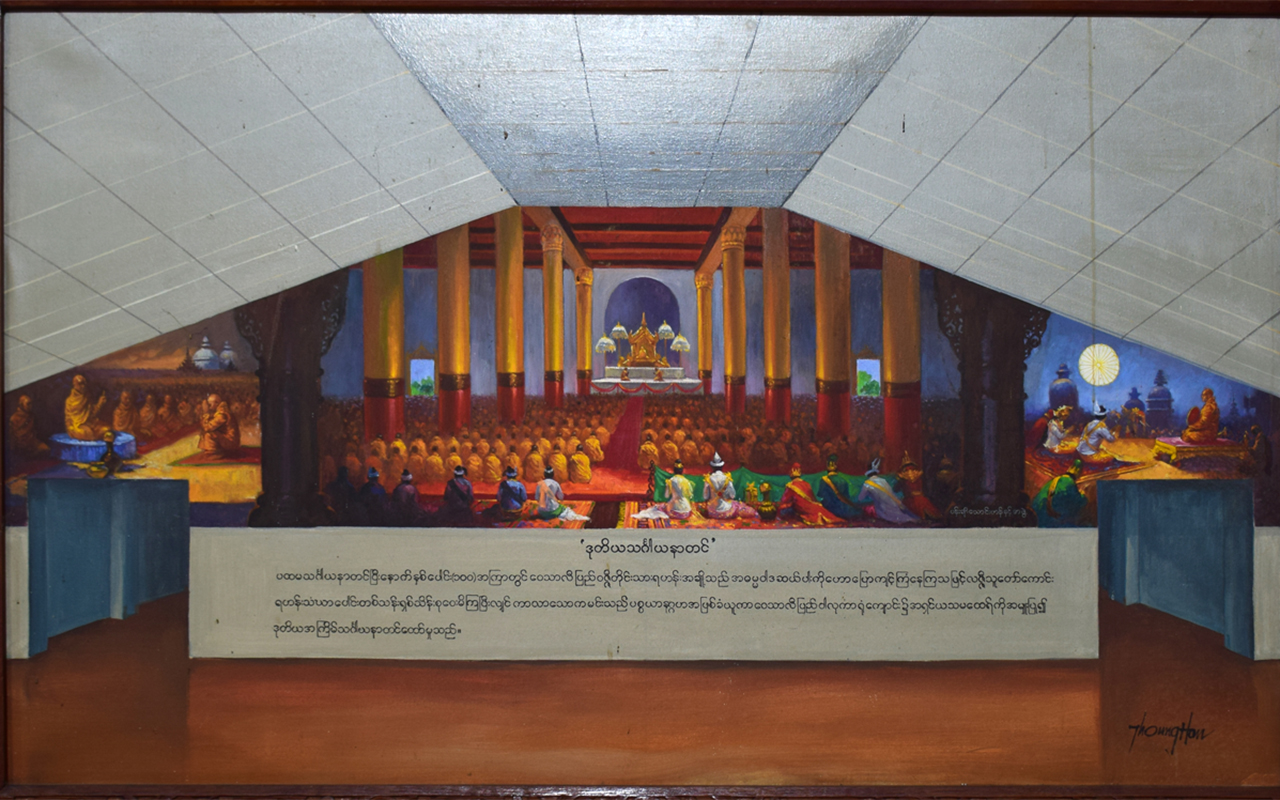
Second Great Buddhist Council (Samga Yana)
The venue was at the Velukaryarma monastry in Vesali City. The second synod was headed by eight Arahants incliuding Sabbatami Thera Ashin Yewata, AshinMahar Yatha, etc. After the meeting the unanimously approved Dhamma and Vinya Rules and displines were chanted by all the attending 700 orally well versed Arahants to purify and to protect the Tipitaka which took a total of eight months to complete it.
(Painter – U Thaung Han)

Third Great Buddhist Council (Samga Yana)
(Painter – U Shane Tun)
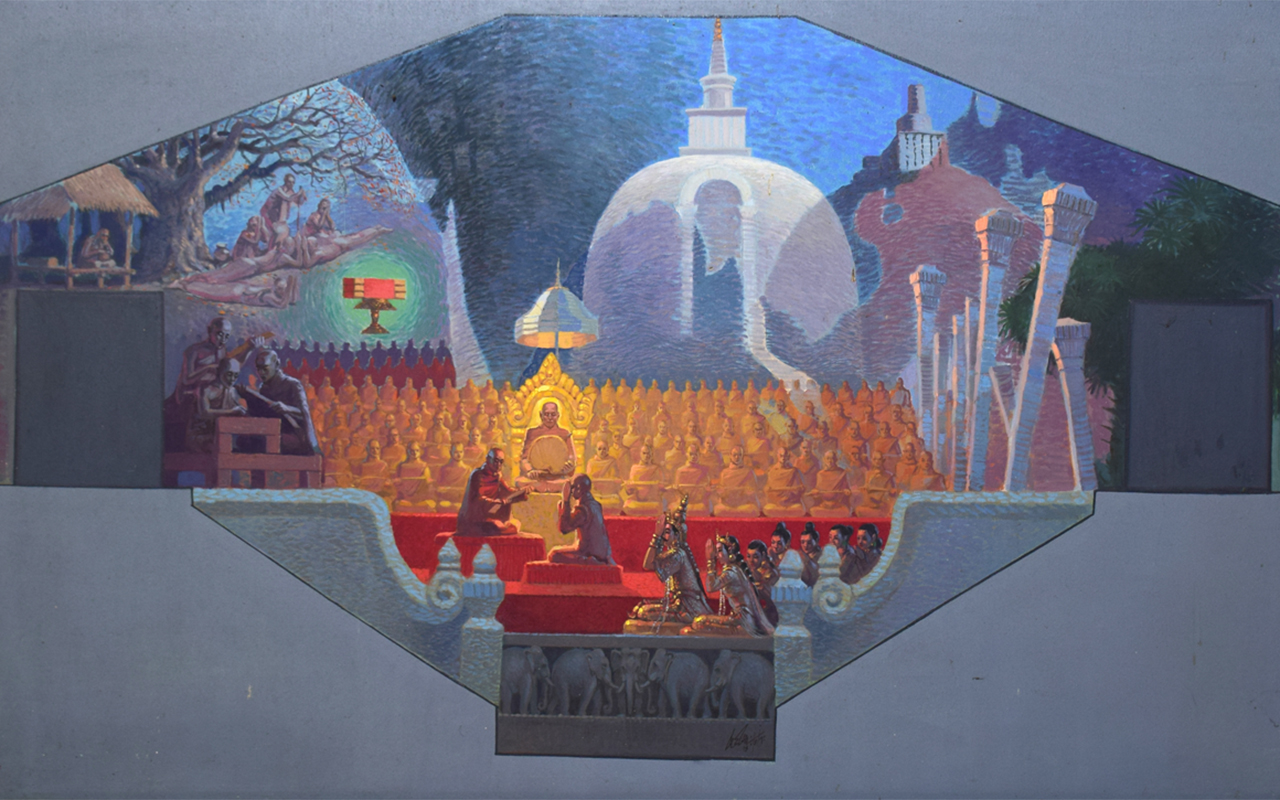
Fouth Great Buddhist Council (Samga Yana)
(Painter – U Tin Aye (mandalay)

Fifth Great Buddhist Council (Samga Yana)
(Painter – U kyawal Lay)
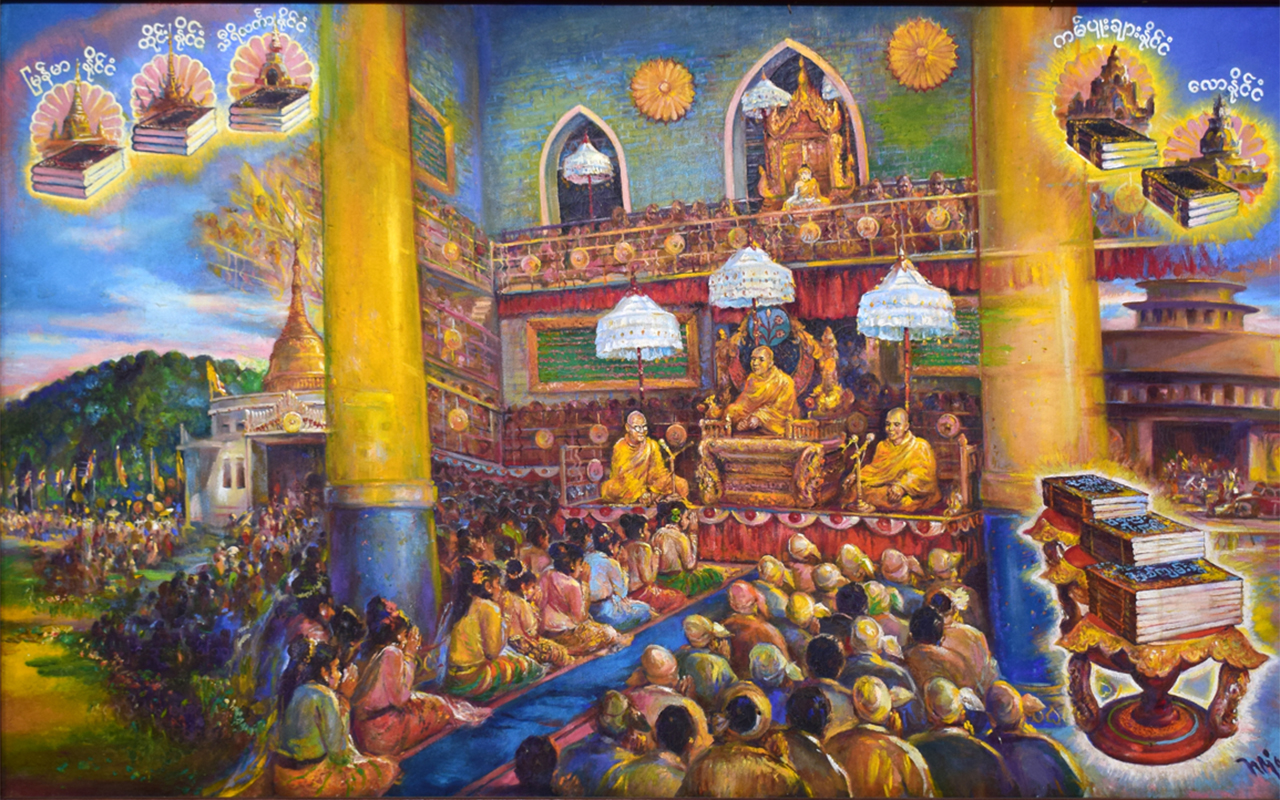
Sixth Great Buddhist Council (Samga Yana)
(Painter – U Ba Lone Lay)

| No | Country name | Population (millions) | Buddhists (%) | The number of monks | Note |
|---|---|---|---|---|---|
| 1 | Sri Lanka | 21.94 | 70.2 | 15,000 | |
| 2 | Myanmar | 54.72 | 87.9 | 594,824 | |
| 3 | Thailand | 71.85 | 92.5 | 200,000 | |
| 4 | Cambodia | 17.12 | 97.1 | 70,905 | |
| 5 | Laos | 7.69 | 64.7 | 20,000 |


